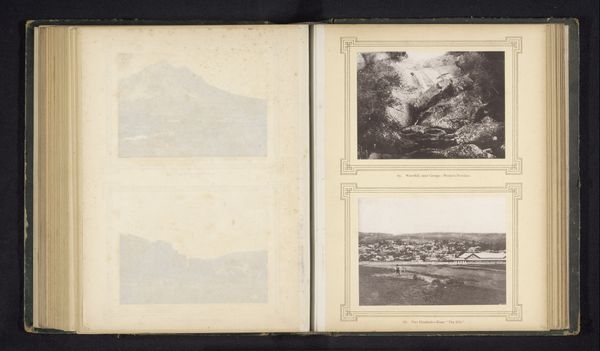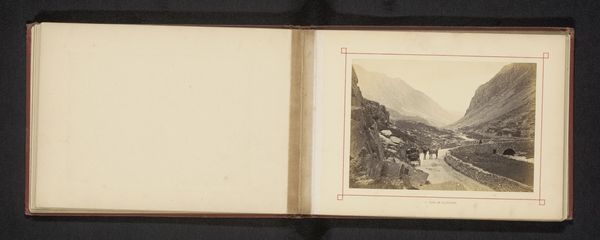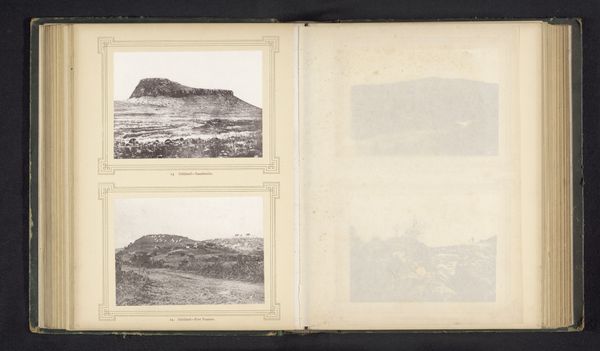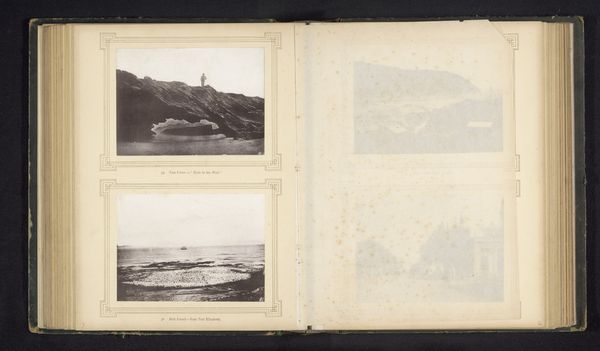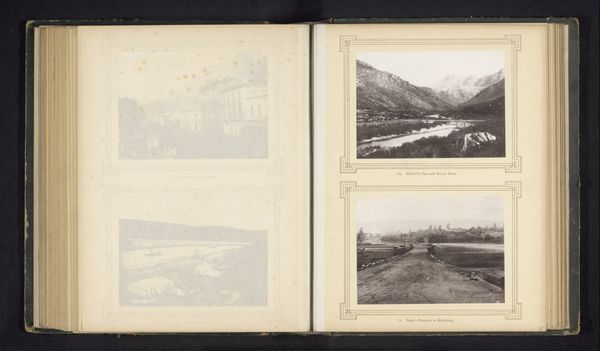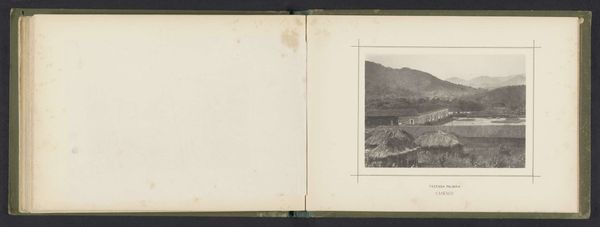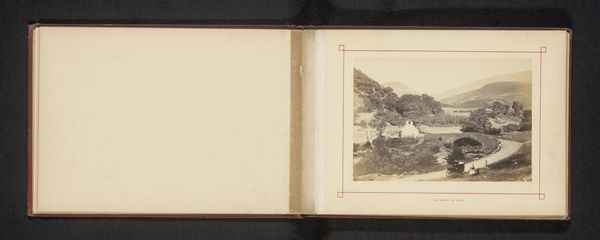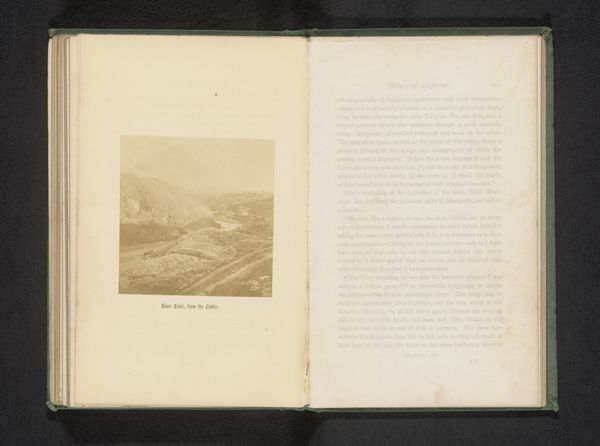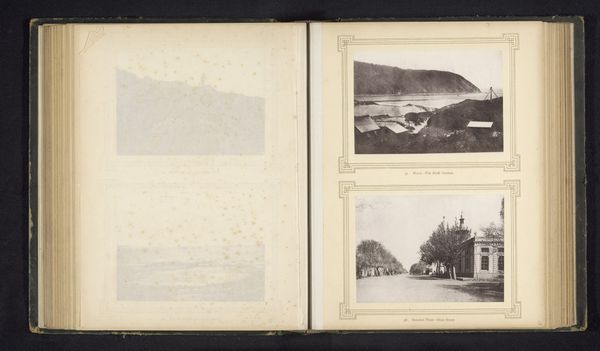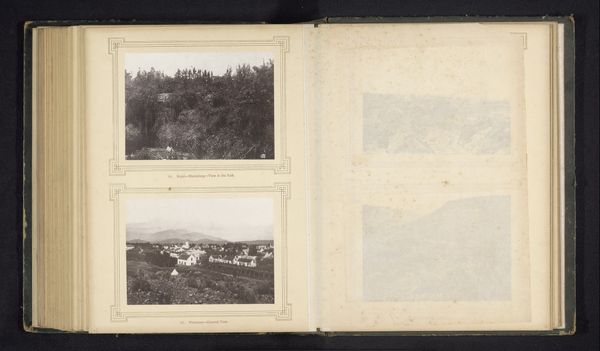![['Mozambique-The fort', 'Western Province-Hex River mountain'] by Sam Alexander](/_next/image?url=https%3A%2F%2Fd2w8kbdekdi1gv.cloudfront.net%2FeyJidWNrZXQiOiAiYXJ0ZXJhLWltYWdlcy1idWNrZXQiLCAia2V5IjogImFydHdvcmtzL2I0ZjJiZmFhLTk0NGItNGY2OC1iYmI4LTU3MDdjOWMxN2Q5YS9iNGYyYmZhYS05NDRiLTRmNjgtYmJiOC01NzA3YzljMTdkOWFfZnVsbC5qcGciLCAiZWRpdHMiOiB7InJlc2l6ZSI6IHsid2lkdGgiOiAxOTIwLCAiaGVpZ2h0IjogMTkyMCwgImZpdCI6ICJpbnNpZGUifX19&w=3840&q=75)
photography, albumen-print
#
landscape
#
photography
#
mountain
#
albumen-print
Dimensions: height 290 mm, width 219 mm
Copyright: Rijks Museum: Open Domain
Curator: My immediate thought? Contained grandeur. These are landscape photographs, 'Mozambique-The fort', and 'Western Province-Hex River mountain', dating from before 1880, likely albumen prints from a travel album. What strikes you initially? Editor: It’s the light—the way the sunlight seems to etch the details of the land while creating a profound sense of depth. Like memories viewed through sepia-toned glasses, dreamy yet immediate. Curator: Indeed. Focusing on 'Mozambique-The fort', we see a stark horizon punctuated by what appears to be a lonely palm tree, perhaps the sole sentinel of civilization. The foreground shows what I'd interpret as systematic cultivation. It establishes a geometric pattern against the more free-flowing horizon. Editor: And there's a hint of unease... I can't shake the feeling it brings to me. Almost feels like a visual poem about loneliness or the quiet resistance of nature, particularly how the rigid fortification almost appears swallowed by the landscape. Does this speak to historical events or conflicts in that place, I wonder? Curator: These prints were likely made for a Western audience. Viewing such vistas perhaps was a source of knowledge but equally served colonial ambitions, a tool for imagining, and consequently, a form of owning these far-off locations. Editor: Right, it makes me consider the photographer's intent. Are we meant to admire the "fort," a symbol of human dominance, or ponder at the mountains' timeless majesty? This leads to another work here. Can we really grasp what "Western Province-Hex River mountain" symbolizes? That valley feels hidden, like a secret. The photograph whispers questions of preservation, of the unseen narratives cradled in those valleys. Curator: Precisely! And we can scrutinize the technique here, this rich tonal range, a trademark of albumen prints; note how the photographer uses light and shadow to accentuate the dramatic scale, the geometric play. All are elements meticulously curated. Editor: This journey into these scenes... it has made me more reflective about what stories these silent images choose to tell. About whose voices echo and whose ones don't, even through the artistry and the landscape itself. Curator: A salient point, bringing together aesthetics, history, and interpretive context. This dialogue is, hopefully, enriching for the observant viewer.
Comments
No comments
Be the first to comment and join the conversation on the ultimate creative platform.
